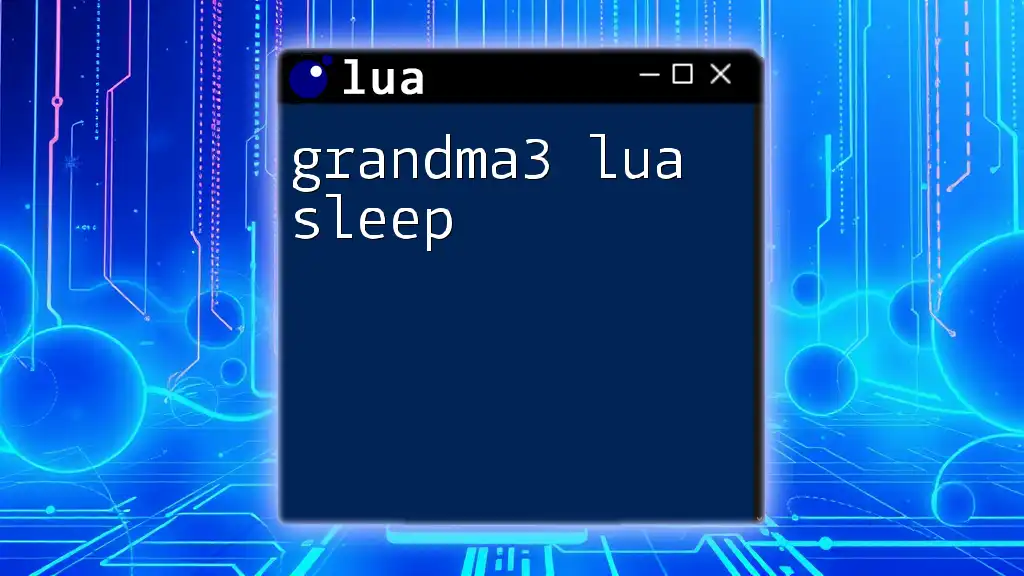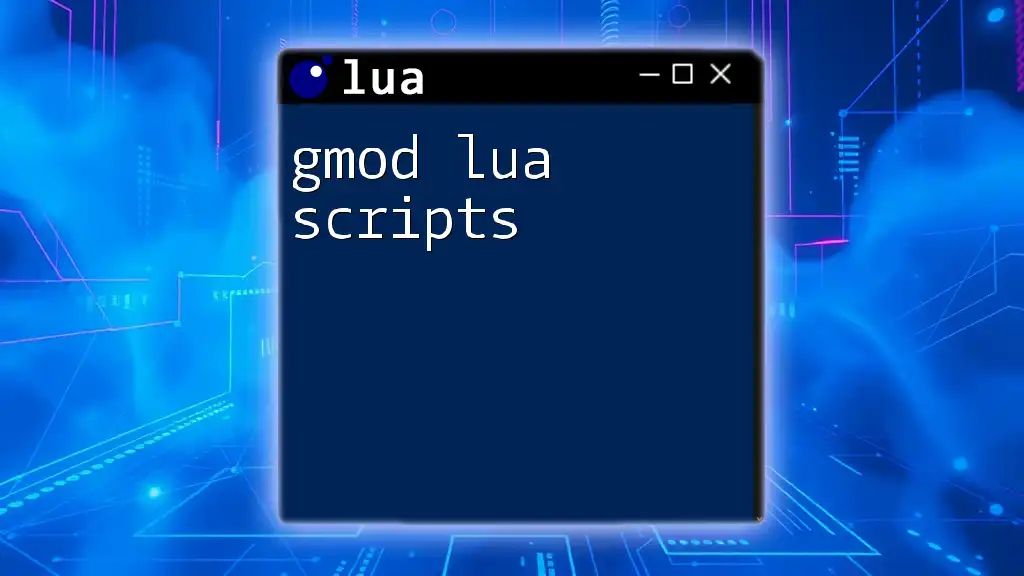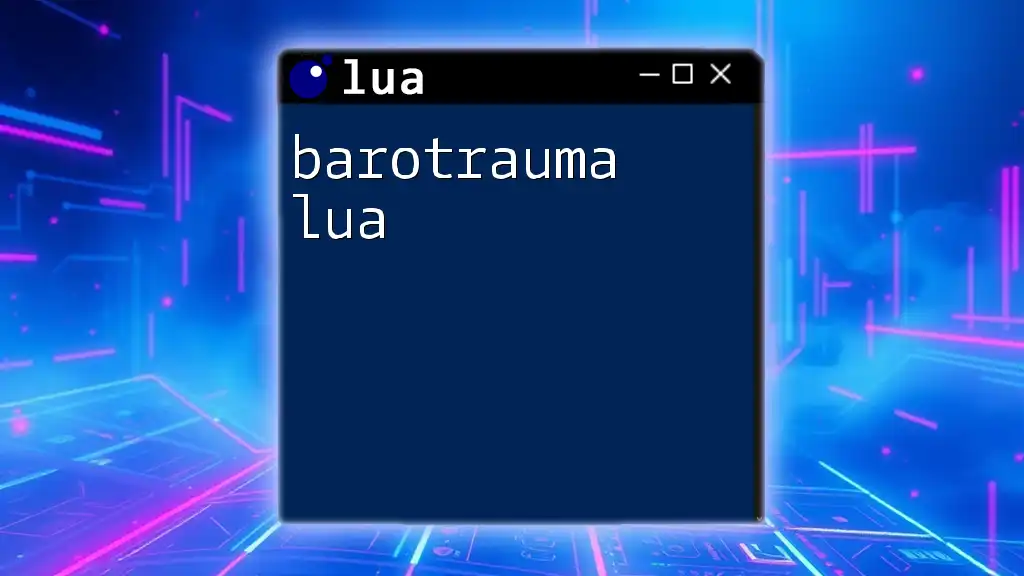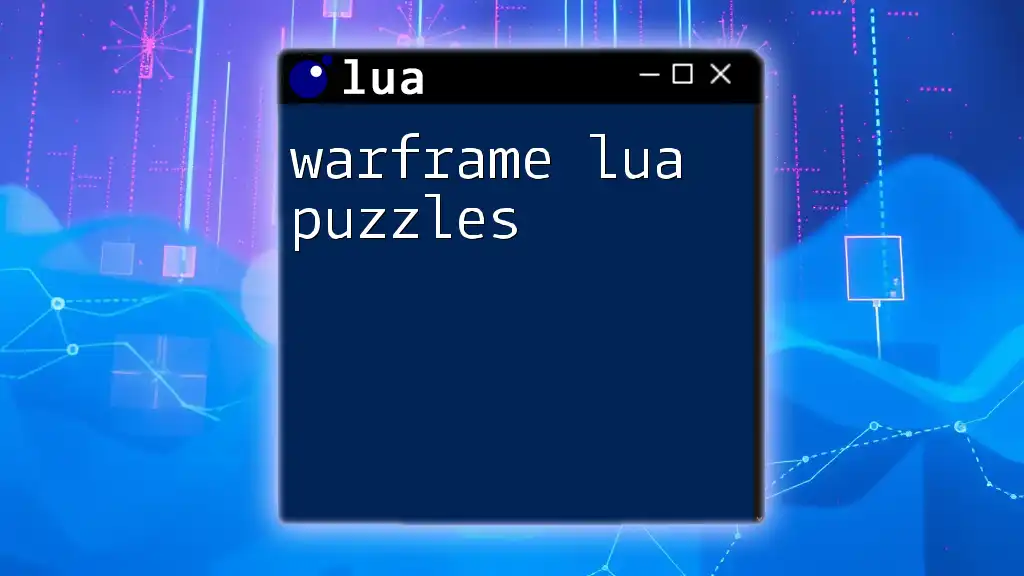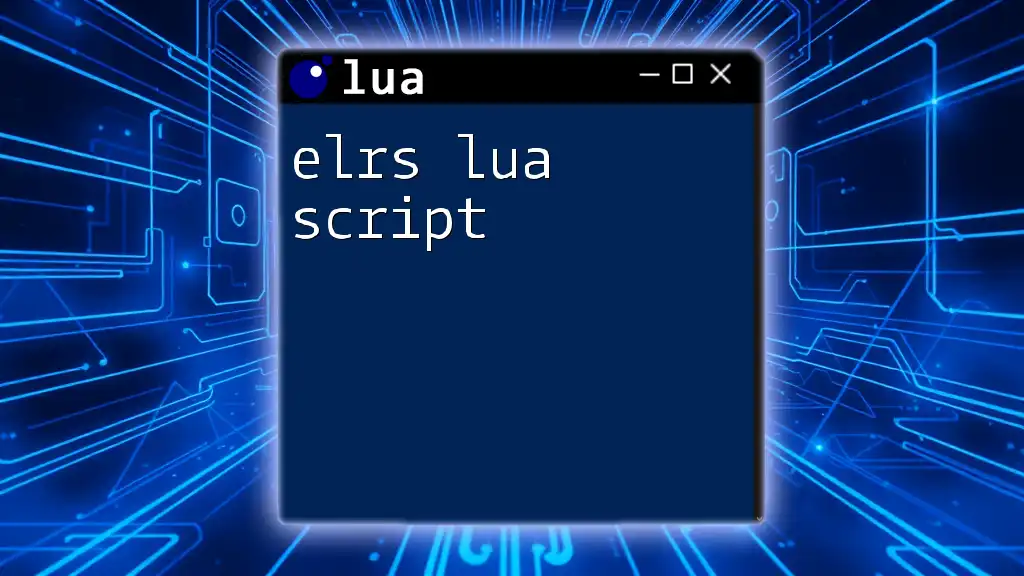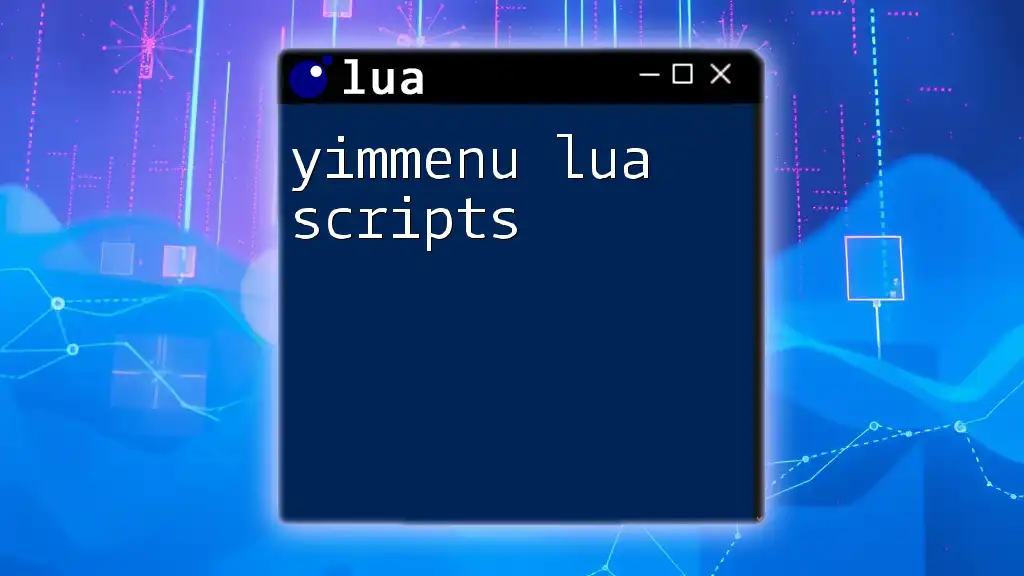In the context of GrandMA3, the `sleep` function is used to pause the execution of a Lua script for a specified duration in milliseconds. Here's how to implement it:
sleep(1000) -- pauses the script execution for 1000 milliseconds (1 second)
What is grandMA3?
grandMA3 is a state-of-the-art lighting control system that has gained immense popularity in live events, theater productions, and large-scale installations. Its versatility and user-friendly interface make it a preferred choice for lighting designers and technicians worldwide. A significant aspect of grandMA3 is its ability to be customized through Lua scripting, which empowers users to automate processes and fine-tune lighting setups in real time.
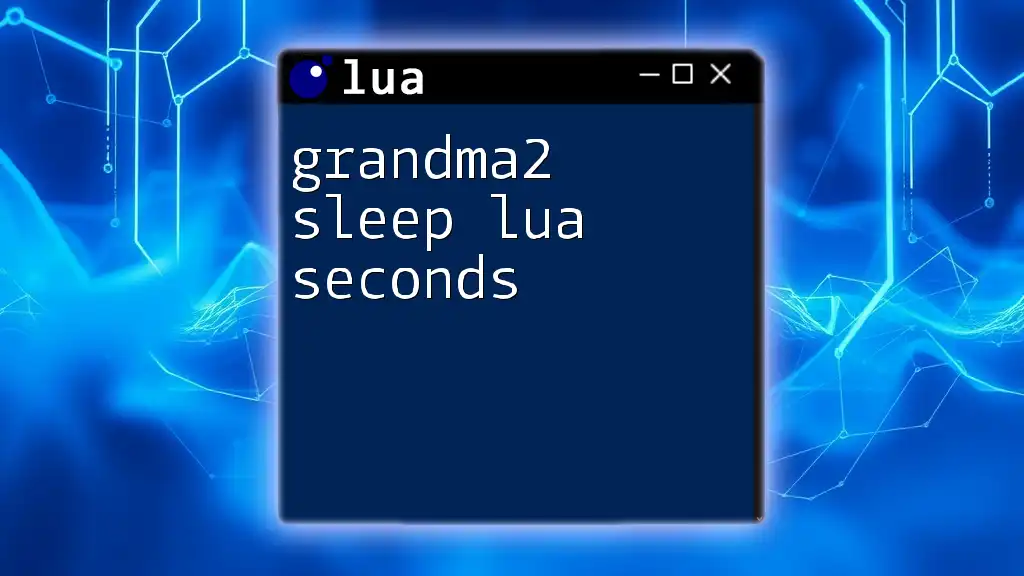
The Role of Lua in grandMA3
Lua is embedded within the grandMA3 platform, providing users with powerful scripting capabilities. Leveraging Lua allows for a higher level of automation, flexibility, and precision when operating lights. By writing simple scripts, users can achieve complex lighting sequences, making it an invaluable tool in any lighting designer's toolkit. Whether automating a sequence of lights or creating custom effects, understanding Lua is crucial for unlocking the full potential of grandMA3.
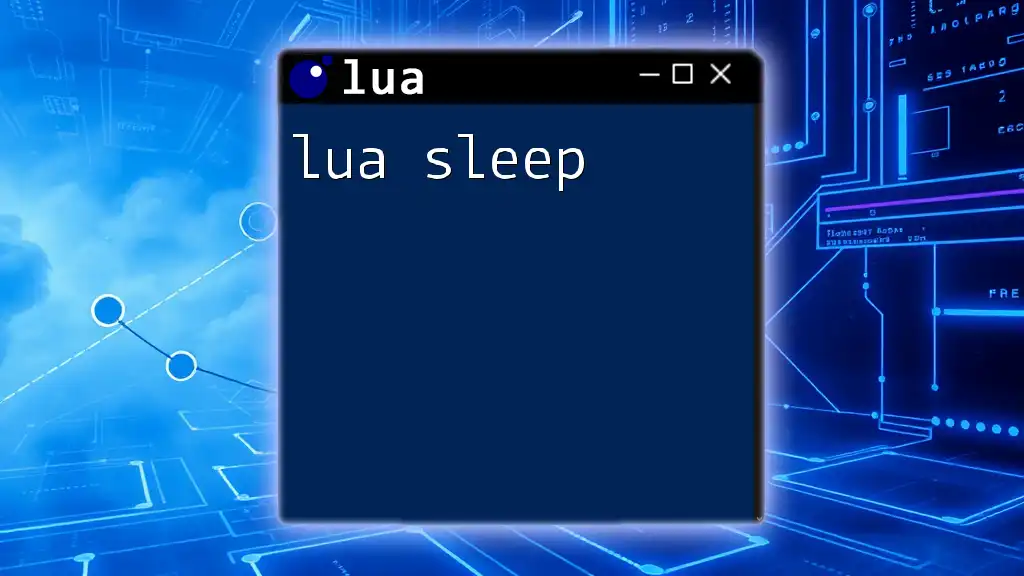
Understanding the Lua Sleep Function
What is the Sleep Function?
The sleep function in Lua is a simple yet effective command designed to pause the execution of a script for a specified duration. This built-in function is essential in scenarios where you want to introduce delays in a script, allowing events to transpire in a controlled, sequential manner. The sleep function is particularly useful when creating dynamic lighting effects, ensuring that changes happen at the right moments.
Syntax of the Sleep Function
The basic syntax of the sleep function is straightforward:
sleep(seconds)
Here, `seconds` is the number of seconds for which the script will pause before continuing. It’s an essential tool for timing-based choreography in light shows.

How to Implement the Sleep Function in grandMA3
Basic Usage of Sleep
Incorporating sleep into your Lua scripts can significantly streamline operations by controlling the timing of commands. For instance, if you want to initiate a light cue, wait for a few seconds, and then execute another command, the sleep function is ideal. Here is a simple example:
function exampleScript()
print("Script started")
sleep(5) -- Pauses for 5 seconds
print("Script resumed after 5 seconds")
end
This snippet starts the script, pauses for 5 seconds, and then resumes, demonstrating how sleep can be applied to create necessary delays.
Advanced Techniques with Sleep
Chaining Functions with Sleep
You can enhance script complexity by chaining multiple functions together using sleep. This makes it easier to create a sequence of actions that occur at specific intervals. For example, if you want to turn on lights, wait, and then turn them off, you can write:
function complexScript()
setLightIntensity(100) -- Turn on lights fully
sleep(2) -- Wait for 2 seconds
setLightIntensity(0) -- Turn off lights
end
In this example, the lights turn on and maintain their brightness for 2 seconds before turning off, creating a clear and controlled sequence.
Using Sleep in Loops
The sleep function can also be effectively utilized within loops, allowing for gradual changes in lighting effects. For instance, if you aim to create a fading effect, the following code demonstrates how to do so through iterations:
function fadeLights()
for i = 0, 100, 10 do
setLightIntensity(i) -- Gradually increase intensity
sleep(0.5) -- Short pause to create visible effect
end
setLightIntensity(0) -- Ensure lights are off at the end
end
This script gradually increases the light intensity from 0 to 100 in increments, pausing briefly to allow each change to be seen clearly. The final command ensures the lights are off after the fading effect.
Common Pitfalls and Best Practices
While the sleep function is powerful, it’s important to be mindful of certain pitfalls. Excessive or improper use of sleep can cause scripts to be unresponsive, especially if used in critical sequences. Here are some best practices for using the sleep function effectively:
- Avoid long pauses in essential scripts that may block user interactions or critical updates.
- Utilize wait times strategically to enhance user experience without sacrificing performance.
Understanding when and how to use sleep will help maintain a responsive and fluid experience, ensuring that your scripts run efficiently.
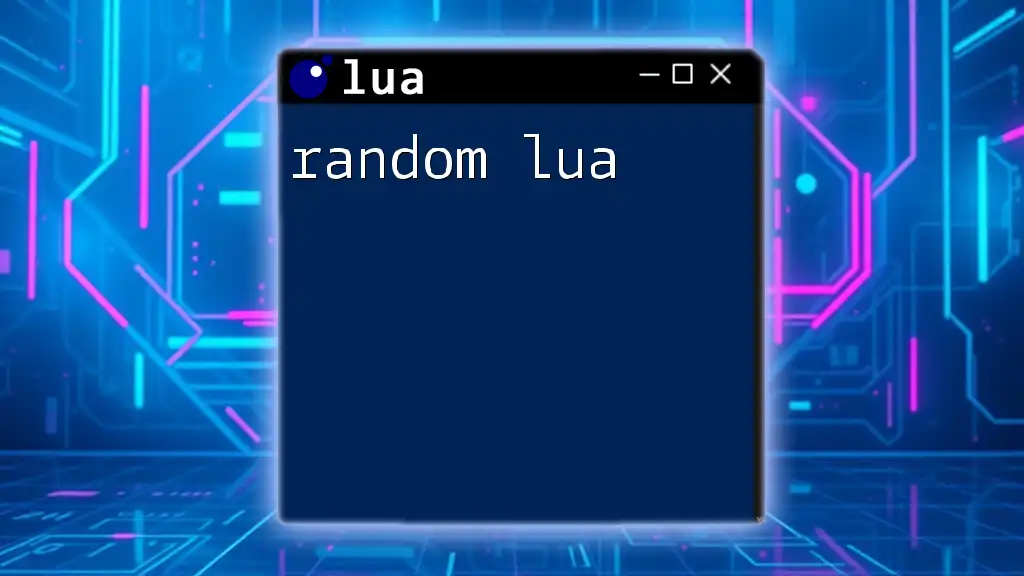
Troubleshooting Lua Sleep in grandMA3
Debugging Sleep-related Issues
If you encounter any problems when using the sleep function in your scripts, it’s essential to identify potential issues early on. Common problems might include functions not executing as expected or scripts running longer than intended. To debug, you can add print statements before and after the sleep calls to see where delays occur and verify that your script’s logic flows correctly.
Performance Considerations
Excessive use of the sleep function can degrade performance over time, making it crucial to balance its use. Scripts that rely heavily on sleep may cause lag or unresponsiveness, particularly in larger productions. Always test your scripts in a controlled environment to ensure they perform as intended before deploying them in live scenarios.
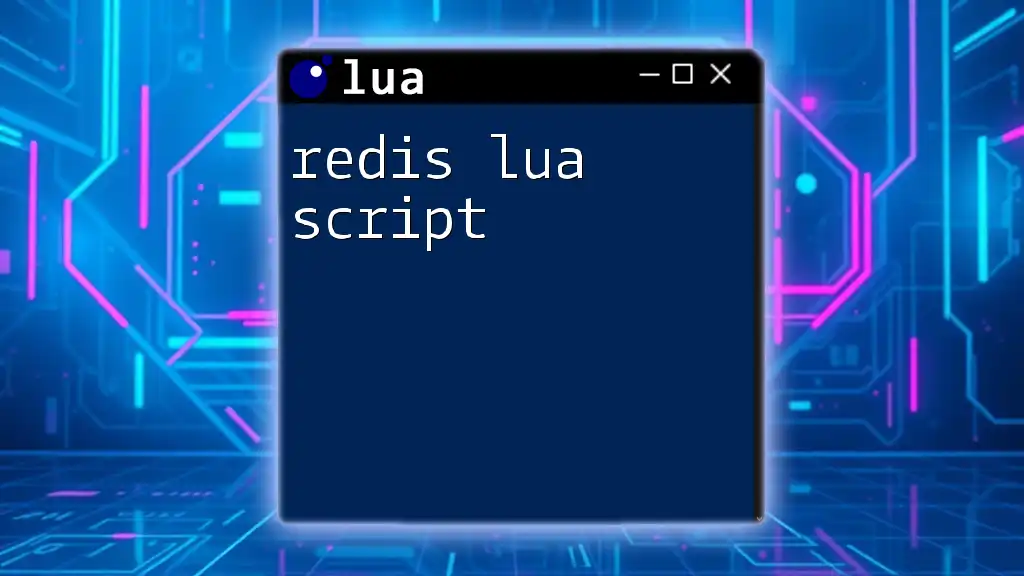
Conclusion
In conclusion, mastering the grandMA3 lua sleep function opens up a world of possibilities for lighting control and automation. Recapping the essential elements discussed, sleep allows for timed delays, controlled sequences, and smoother transitions in your scripts. By experimenting with this powerful function, you can create unique and captivating lighting experiences that enhance any production.
As a final thought, I encourage you to experiment with the sleep function and share your innovative uses of Lua scripting within grandMA3. Consider delving into additional resources and tutorials to deepen your knowledge and further harness the power of Lua in your lighting designs.

